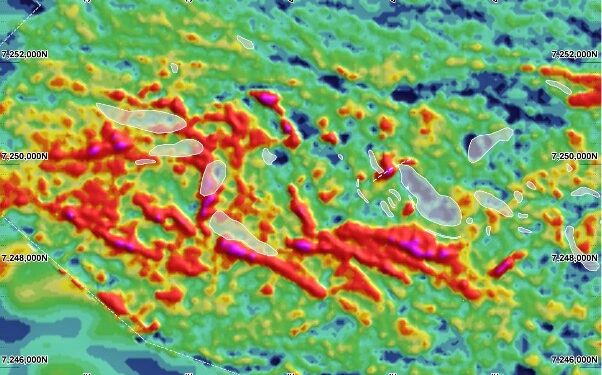Kingfisher Mining Limited (ASX:KFM) has made further new high-grade REE mineralisation discoveries from rock chips at its 100% owned projects in the Gascoyne Mineral Field in Western Australia.
“We are ecstatic with the latest discoveries at MW7 and MW8,” Executive Director and CEO, James Farrell, said.
“We are advancing along the target corridor, with these new high-grade outcropping REE discoveries coming from the initial 3km of the 54km strike of the mineralised corridor.
“The new discoveries now mean there are multiple cross cutting lodes over a 2km zone extending along the corridor from our initial discovery at the MW2 Prospect, where drilling is scheduled to commence in the coming weeks.
“We are extremely encouraged by the results and the potential of our extensive tenement package as we continue our mapping and rock chipping programmes.”
Mick Well REE Discoveries
On-going mapping and sampling at the company’s Mick Well project has led to the discovery of new high-grade mineralisation at the MW7 and MW8. MW7 and MW8 are located 700m and 1900m northwest of the MW2 prospect, where drilling has returned high grade REE results of 5m at 3.45% TREO and where rock chips sampling has returned results of over 40% TREO.
Drilling of these areas are part of a drill programme commencing in the coming weeks. Significantly, the new MW7 and MW8 discoveries occur in NE-trending structures (like MW2) and crosscut the WNW-trending target corridor which extends for over 54km in the Company’s tenure.
MW8
Mineralisation at MW8 has been mapped in two parallel lodes that outcrop over a strike length of more than 300m, with results that include:
• 17.64% TREO with 3.82% Nd2O3 + Pr6O11 (MWGS1224)
• 16.75% TREO with 3.66% Nd2O3 + Pr6O11 (MWGS1232)
• 13.80% TREO with 3.02% Nd2O3 + Pr6O11 (MWGS1301)
• 10.62% TREO with 2.34% Nd2O3 + Pr6O11 (MWGS1152)
• 4.88% TREO with 0.97% Nd2O3 + Pr6O11 (MWGS1291)
• 4.49% TREO with 1.02% Nd2O3 + Pr6O11 (MWGS1308)
• 2.62% TREO with 0.58% Nd2O3 + Pr6O11 (MWGS1163)
• 2.39% TREO with 0.58% Nd2O3 + Pr6O11 (MWGS1231)
• 2.01% TREO with 0.45% Nd2O3 + Pr6O11 (MWGS1223)
• 1.75% TREO with 0.42% Nd2O3 + Pr6O11 (MWGS1222)
• 1.74% TREO with 0.42% Nd2O3 + Pr6O11 (MWGS1233)
• 1.21% TREO with 0.37% Nd2O3 + Pr6O11 (MWGS1151)
• 1.16% TREO with 0.29% Nd2O3 + Pr6O11 (MWGS1304)
• 1.11% TREO with 0.36% Nd2O3 + Pr6O11 (MWGS1319)
• 1.08% TREO with 0.28% Nd2O3 + Pr6O11 (MWGS1226)
New mineralisation has also been identified more than 1200m northeast of the MW8 outcrop and along the interpreted MW8 structure. Results from the potential extensions to MW8, which will be investigated as part of upcoming mapping programmes, include 1.08% TREO with 0.18% Nd2O3 + Pr6O11 (MWGS1187).
MW7
Geological interpretation at MW7 has identified a potential strike length of at least 1000m (Figure 1), with mineralisation confirmed from an initial sample which returned 3.85% TREO with 0.65% Nd2O3 + Pr6O11 (MWGS1023).
MW2
Additional rock chip results from on-going work at MW2 have also further extended the mineralised zone. Results from the new extensions to high grade REE lodes include:
• 7.34% TREO with 1.68% Nd2O3 + Pr6O11 (MWGS1193)
• 5.06% TREO with 1.13% Nd2O3 + Pr6O11 (MWGS1177)
• 4.92% TREO with 0.84% Nd2O3 + Pr6O11 (MWGS1128)
• 3.91% TREO with 0.78% Nd2O3 + Pr6O11 (MWGS1191)
• 3.19% TREO with 0.64% Nd2O3 + Pr6O11 (MWGS1179)
• 2.66% TREO with 0.56% Nd2O3 + Pr6O11 (MWGS1205)
• 1.77% TREO with 0.36% Nd2O3 + Pr6O11 (MWGS1200)
• 1.38% TREO with 0.28% Nd2O3 + Pr6O11 (MWGS1209)
• 1.34% TREO with 0.27% Nd2O3 + Pr6O11 (MWGS1190)
• 1.15% TREO with 0.25% Nd2O3 + Pr6O11 (MWGS1130)
Other Areas of New Mineralisation
Mineralisation has also been identified in a laterally extensive WNW-trending lode which is parallel to the 54km target corridor. The results from the single mineralisation sample collected include 2.33% TREO with 0.45% Nd2O3 + Pr6O11 (MWGS1240).
The current mapping and rock chipping work is targeting a large number of laterally-extensive high priority targets in a broad area that extends 10km west-northwest from MW2. The targets in this area are also associated with carbonatite complexes as well as high thorium and magnetic responses – similar to what is seen from the newly identified outcropping mineralisation at MW2.
Significantly, all of these targets within this 10km long area also lie within Kingfisher’s target corridor, the Chalba Shear Zone, which extends for 54km across the Company’s Gascoyne tenure.
The Chalba Shear Zone is a broad WNW-trending crustal-scale structure that has played an important role in providing a conduit for the intrusion of the carbonatites, as well as the associated alteration and late-stage mineralised veins and carbonatite dykes. Fenites (carbonatite-associated alteration) and potassium fenites, are well-developed in the Mick Well area and are an important host of the REE mineralisation. The carbonatite intrusion- related exploration and mineralisation model is shown in Figure 5.
For further information please visit: https://www.kingfishermining.com.au/












